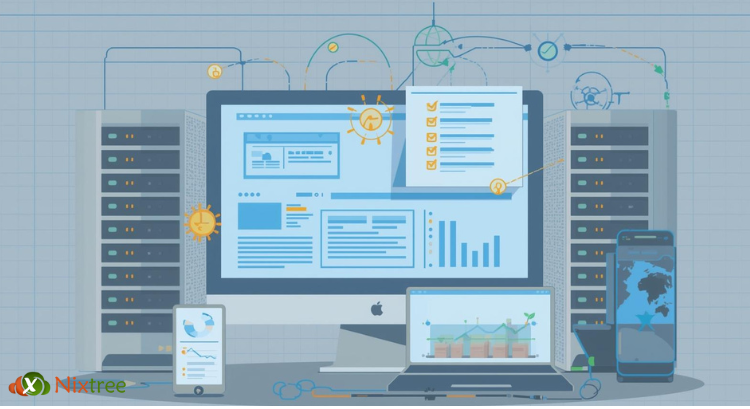The Role of Network Monitoring in Server Optimization
The Role of Network Monitoring in Server Optimization
In today’s digital world, server optimization is no longer an option- it’s a necessity. Businesses depend on their websites and applications to run smoothly, and customers expect fast, reliable, and secure experiences. If servers are not optimized, it can cause issues such as;
- Slow website loading
- Unresponsive websites
- Server crashes under high traffic
These problems lead to reduced uptime, customer frustration and even financial loss. Even loyal customers may switch to competitors if they repeatedly face delays or downtime. Implementing a well-planned network monitoring system is key to maintaining server performance and ensuring long-term reliability.
Best Practices for Server Optimization
Server optimization is the process of improving a server’s configuration and resource usage to achieve faster performance, higher efficiency, and smoother operations. Besides upgrading hardware, there are various other approaches that can enhance server performance.
- Keep Software Updated: Regularly update your server software, applications, and security patches. Staying current improves performance, enhances stability, and protects against security risks.
- Disable Unused Services: Turn off unnecessary background services and processes. This frees up CPU and memory resources, allowing the server to focus on essential tasks.
- Enable Caching: Caching temporarily stores frequently used data, allowing faster access and reducing repeated processing. This accelerates response times and decreases server load.
- Tune Web Server Settings: Adjust your server configurations to efficiently handle requests, especially during traffic spikes.
- Optimize the Database: Use indexing, regular defragmentation, and efficient queries for better performance.
- Optimize the Operating System: Tailor OS settings to your workload for improved resource management.
- Use Connection Pooling: Connection pooling is a technique where a group of database connections is kept open and reused, reducing the time to connect for each request. This lowers overhead and boosts performance under high traffic.
- Use a Content Delivery Network (CDN): CDN copies your website on servers located in different parts of the world. It loads the content from the server close to the user.
👉 Don’t let slow servers hold you back- trust Nixtree for expert server optimization.
Why Network Monitoring Matters?
Network monitoring keeps a close watch on your network and devices to detect issues early. With the right monitoring tools, businesses can benefit from:
- Real-Time Monitoring and Alerts: Promptly detect issues to prevent downtime and maintain smooth operations.
- Unified Dashboards: View all network components in one place for easier management and oversight.
- Automation Features: Efficiently handle large and complex networks with minimal manual intervention.
- User Management Capabilities: Ensure secure access and control over your network infrastructure.
Key Network Performance Metrics
To enhance network performance, monitoring tools observe critical metrics such as:
- Bandwidth Utilization: Measures how much network bandwidth is actively used
- Latency: How long data takes to reach its destination across the network
- Packet Loss: Lost packets that can slow or interrupt network communication.
- Jitter: Variations in packet arrival times. it is critical for maintaining video and voice quality.
- Throughput: The actual data transfer rate achieved over the network.
- Error Rates: Frequency of transmission issues affecting data integrity.
- Application Response Time: How quickly applications respond to user requests.
Key Device & Health Metrics
Network performance is closely linked to the health of connected devices. Monitoring tools also track:
- CPU and Memory Usage: Ensures devices are not overloaded.
- Disk Space: Monitors available storage to prevent bottlenecks.
- Device Availability (Uptime): Measures reliability and overall stability.
- Device Errors: Records and analyzes technical issues to prevent failures.
Tracking network health metrics is essential for keeping systems running smoothly and efficiently. Regular monitoring helps detect problems early, optimize performance, manage resources effectively, provide a better user experience, and troubleshoot issues quickly, ensuring fast and reliable network operation.
Retail Website Optimization: A Real-World Network Monitoring Case
During a holiday sale, a retail website experienced slow loads and crashes. Using network monitoring, our team tracked metrics in real time, received immediate alerts, and optimized loads and queries. The website handled the surge seamlessly, resulting in zero downtime and increase in sales.
Final Thoughts
Network monitoring and optimization go hand-in-hand. Continuous monitoring provides the visibility and control needed to proactively resolve issues and maintain peak server performance.
👉 Get a free network monitoring demo from Nixtree. Boost your server performance and ensure seamless operations.
Contact Nixtree’s expert team for tailored server optimization today.

